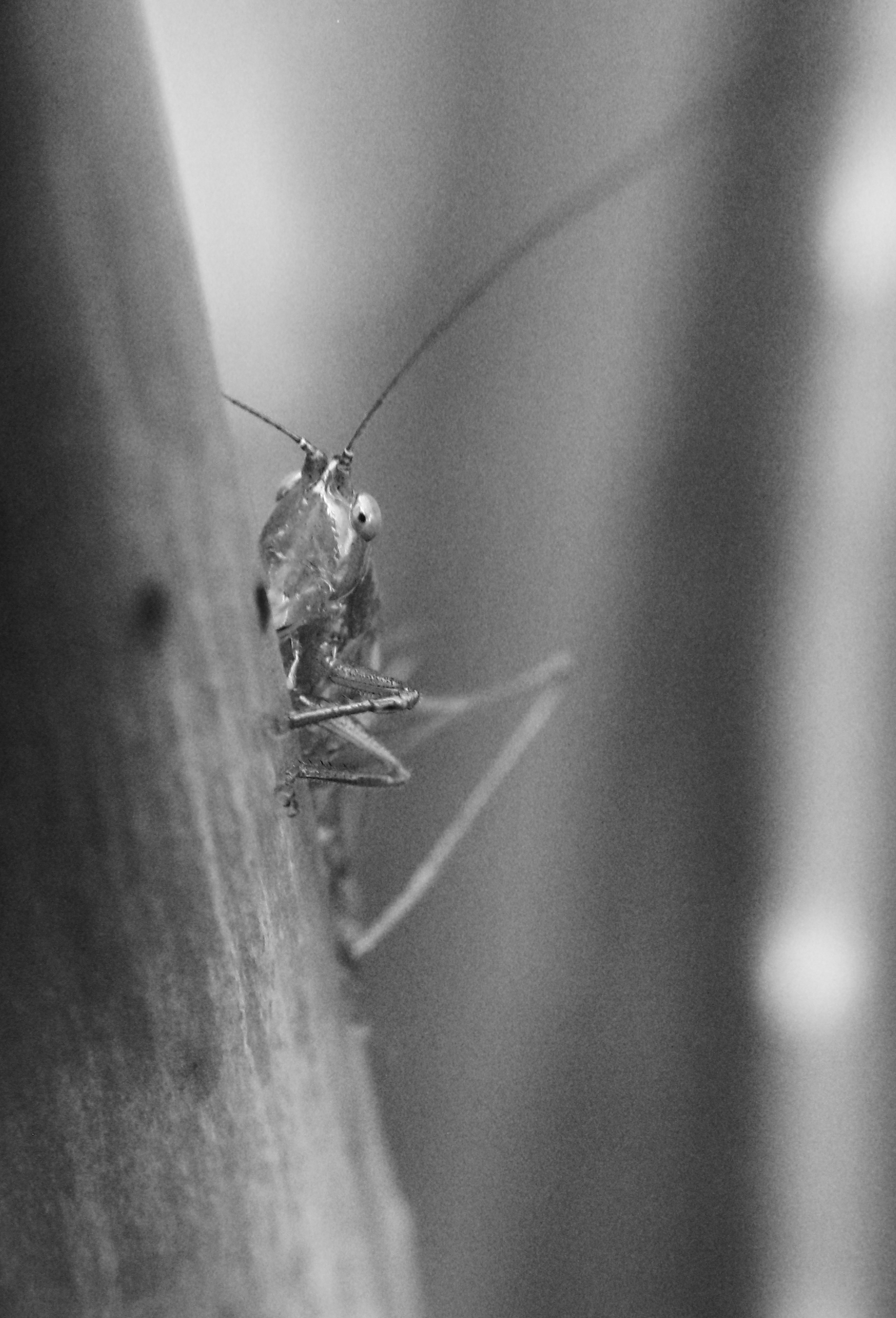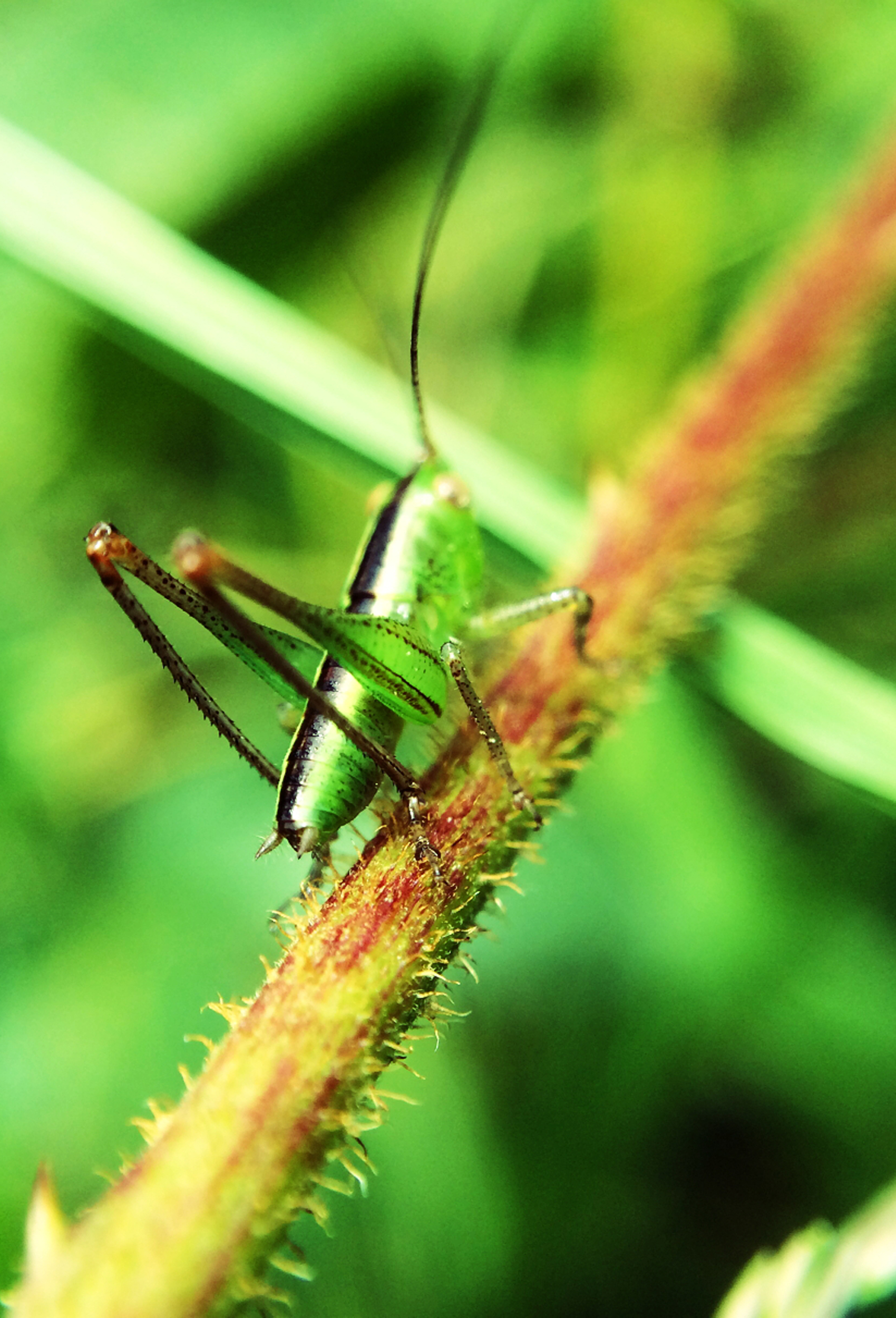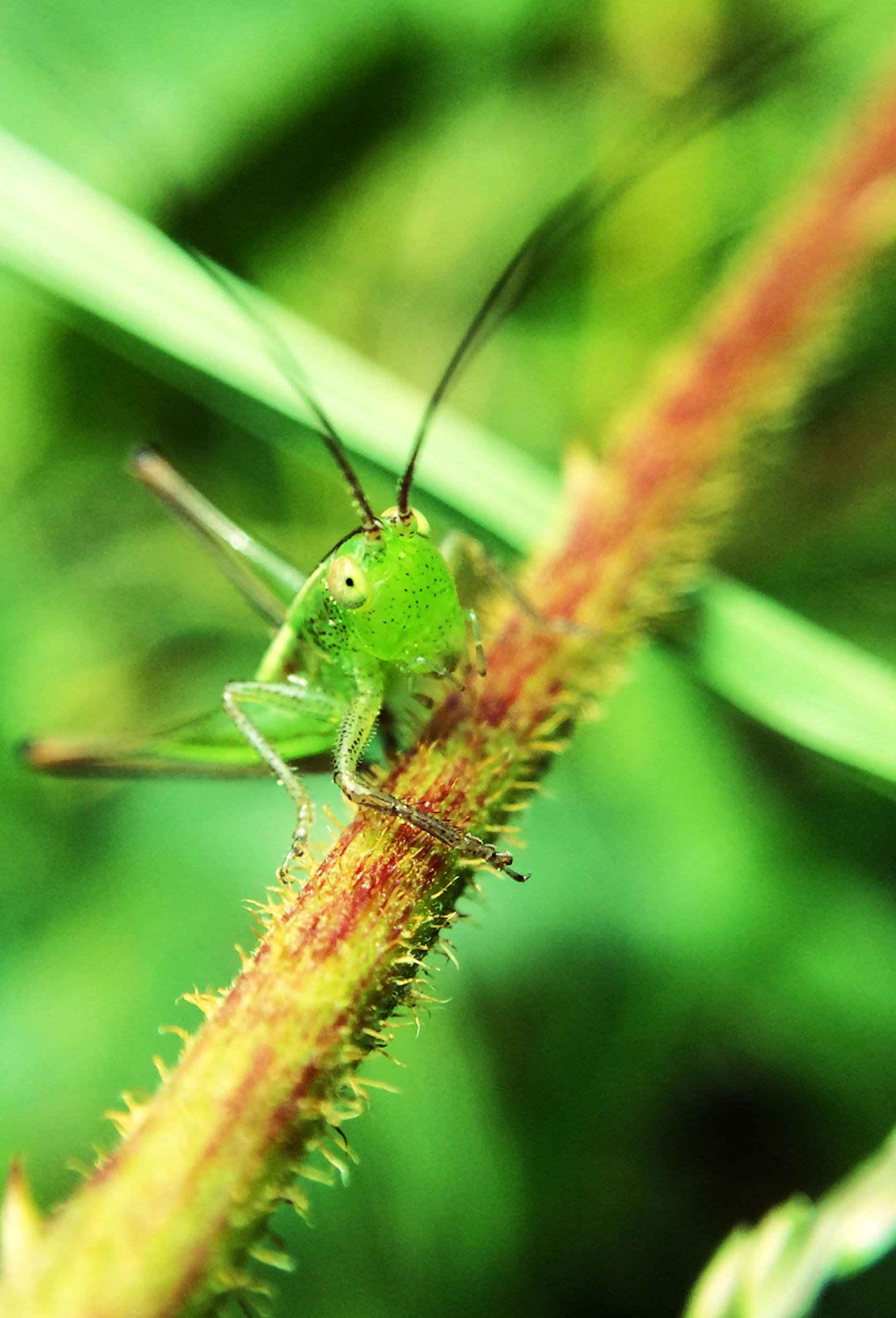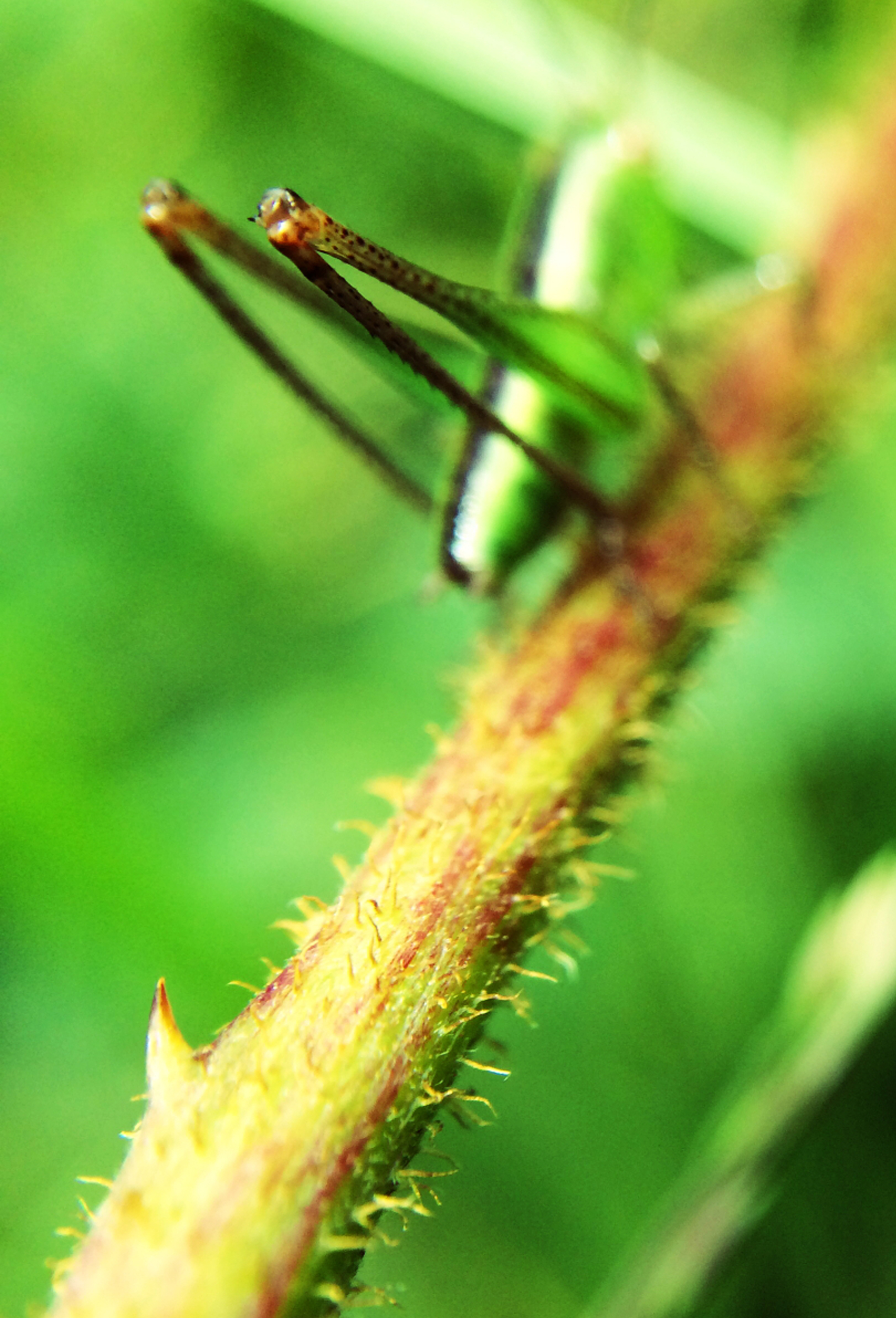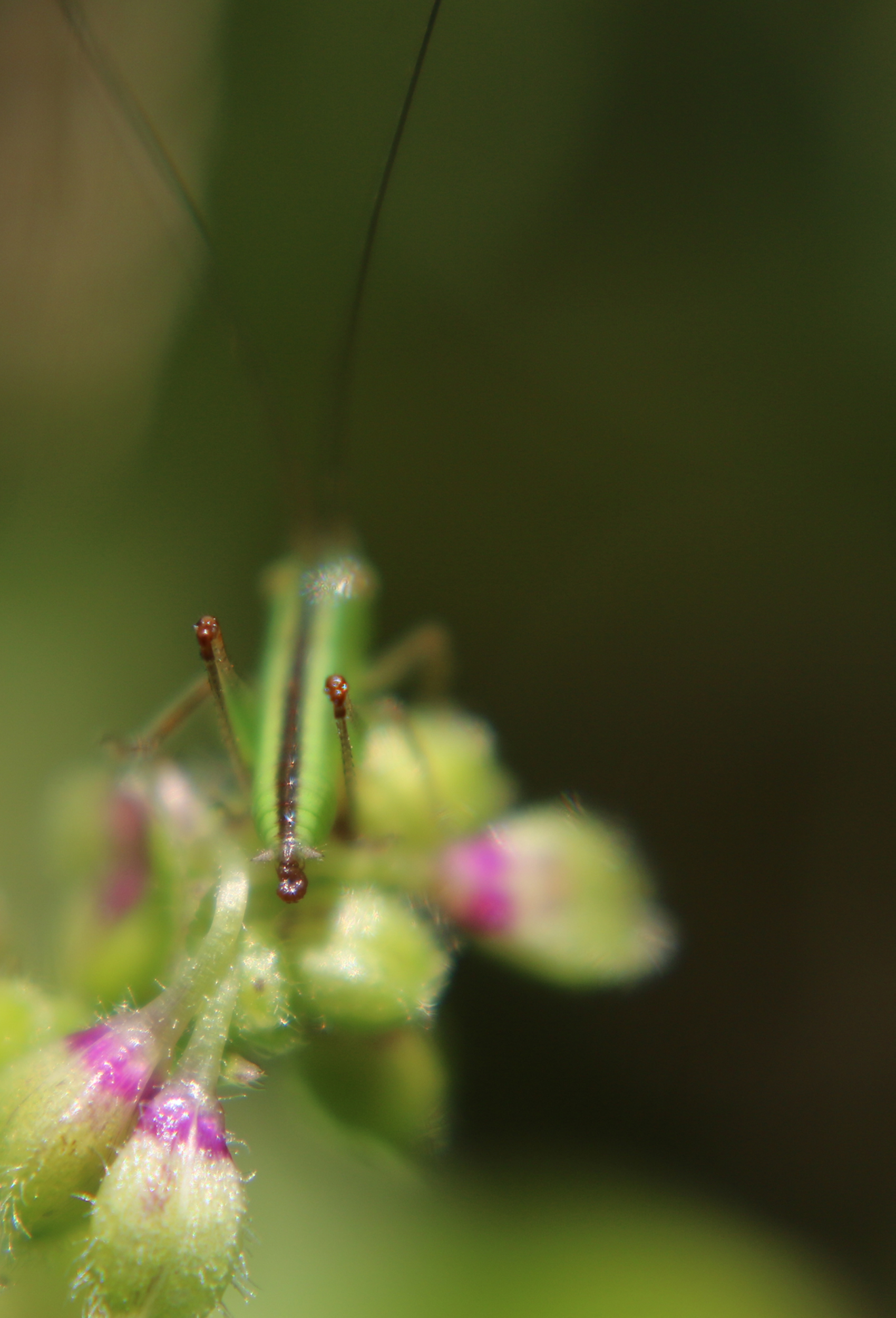larval stage
Great Green Bush Cricket | Saltamontes verde común europeo
Crickets are grasshopper-like creatures with flattened bodies. Crickets are often confused with grasshoppers because of a similarly structured body and large jumping legs. Unlike grasshoppers, crickets have their cylindrical bodies (1 to 2 inches long maximum), segmented in parts. A spherical head is paired with pointy long antennas (feelers). Both female and male crickets come with two forewings (stiff) and two hindwings (used for flying), covering their abdominal part. At the end of abdomen, you will find two pointy spikes known as cerci (abdominal sensory appendages). Its hind legs (that aid them in jumping and flying), along with three-jointed tarsal, are visibly stronger than the ones in front. Crickets come in red, green, black and light brown color.
taxOnomy
kingdOm
animalia
phylUm
arthropoda
clasS
insecta
Order
orthoptera
familY
tettigoniidae
genUs
tettigonia
Description
Large grasshopper, reaching 28 – 42 mm in length. Occasionally it can be brown, but it is usually green, with a longitudinal brown band in the middle. The forewings or tegminae are much longer than the hind femurs, with a stridulation area of 1/6 of the total length in males. Despite the great development of its wings, its flight is quite weak.
The male has cerci at the end of the abdomen that have an internal tooth near the base.
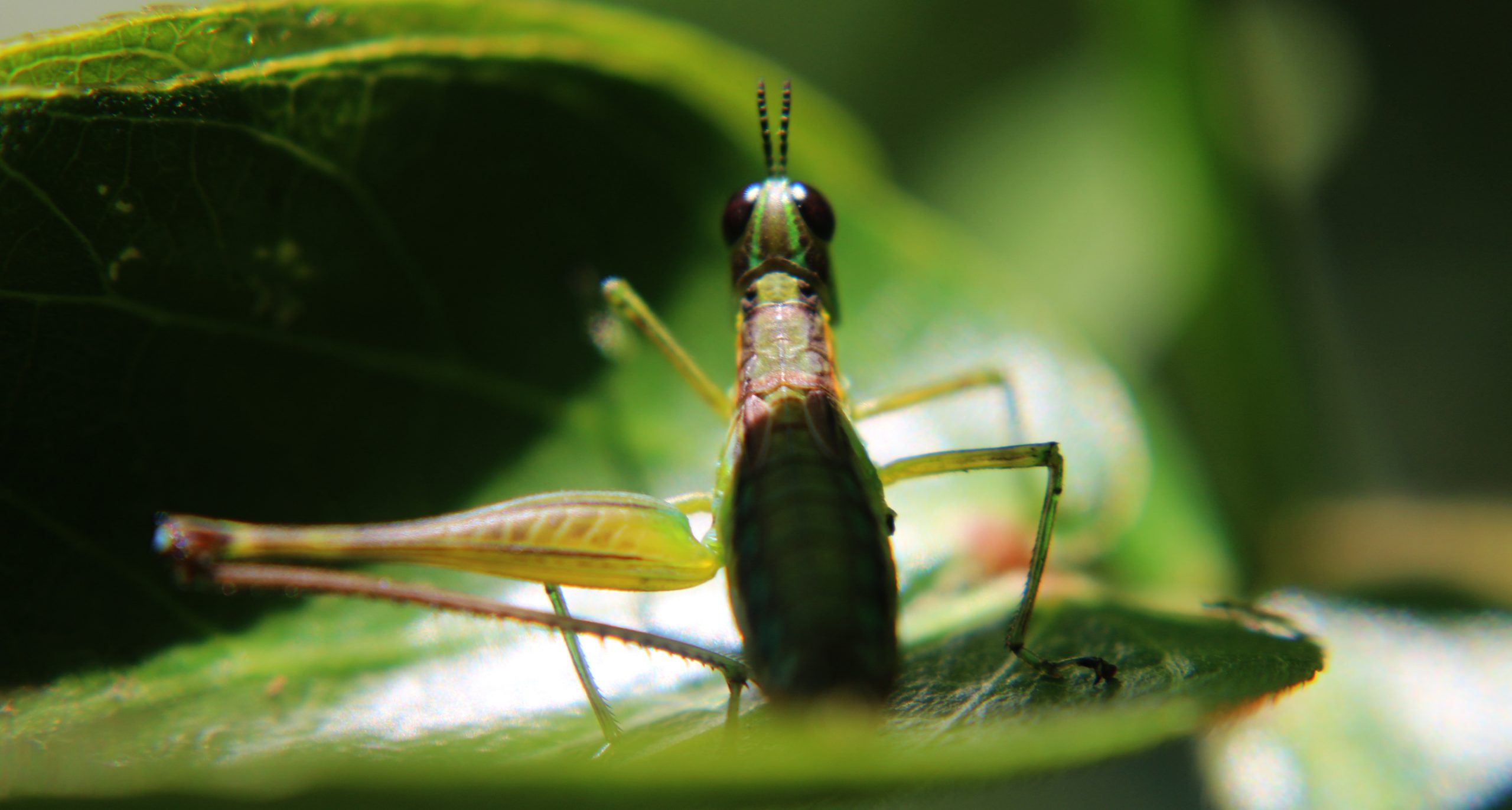
Crickets
are said to have
compound eyes
and great vision.
Their eyes enable them to look in different directions at one time.
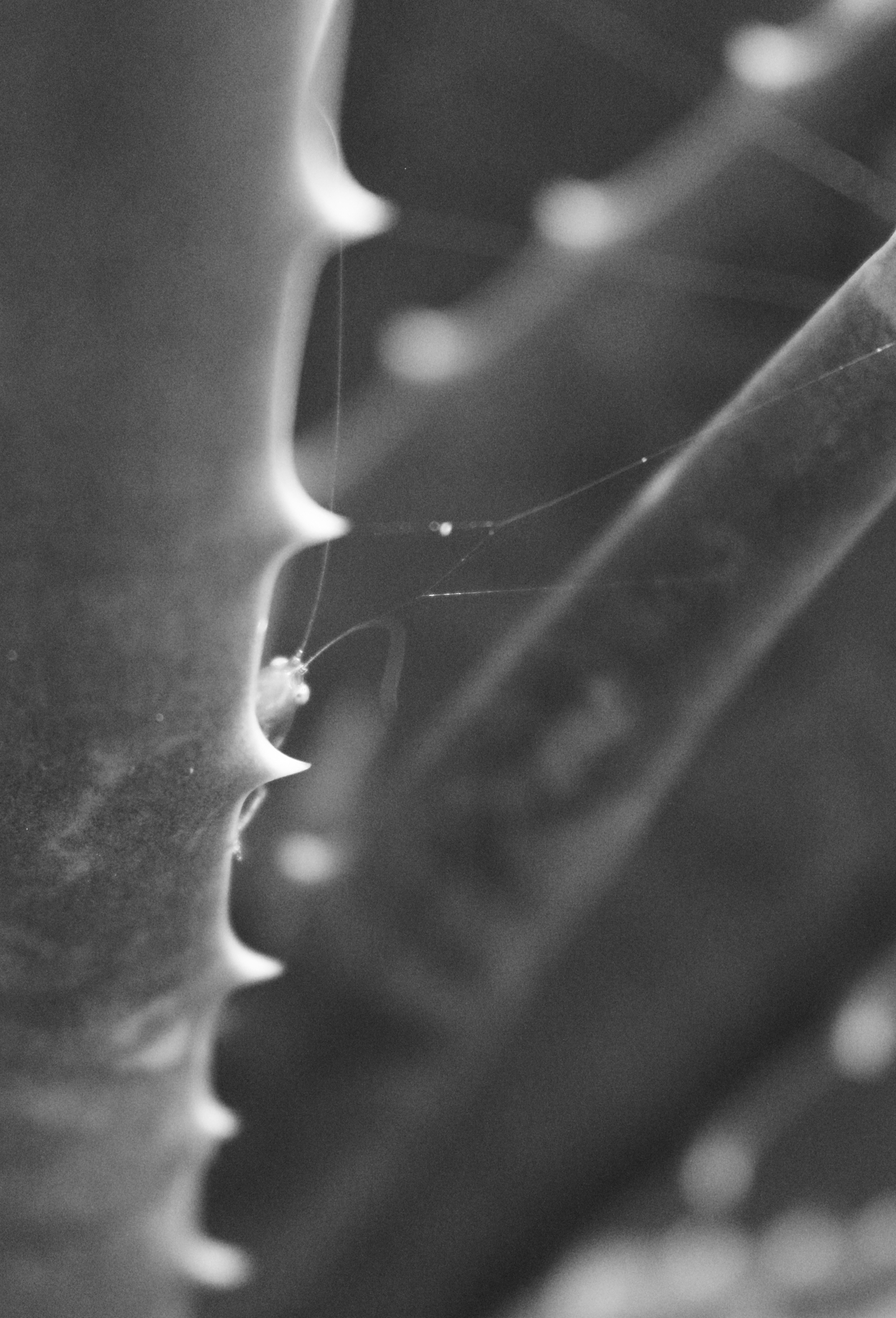
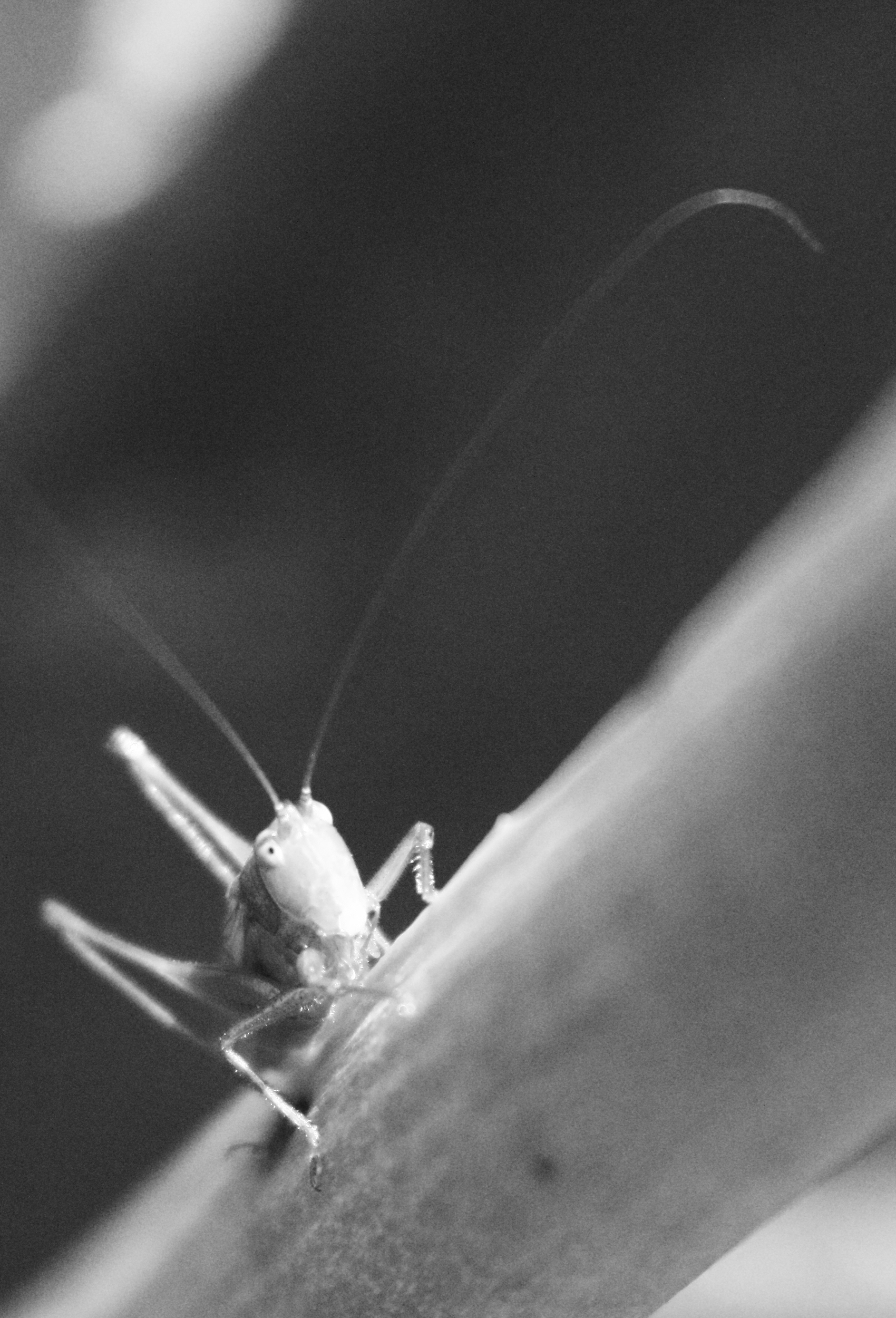
Crickets have
highly sensitive ears
located right under the knees,
on their front legs. Just a millimeter long or so, cricket’s ears are one of the tiniest of any animal in the world.
The female has a subgenital plate twice as long as it is wide, with two well-marked lateral keels that are parallel throughout and with a deep but not narrow incision at the apical margin that forms two lobes that practically meet at the base. Its ovipositor is almost as long as the body, slightly curved upwards.
Crickets are known for their musical chirping sounds.
But only male crickets chirp.
Some species of crickets are mute.
They got this name because ‘cricket’ sounds quite similar to the chirps they usually produce. Let’s imagine their sound, “criket … criket … criket… Cricket is not the original word. This word is derived from an old French word, ‘crequet’. From crequet, it became ‘creket’ (a middle English word) and later it ended up on cricket.
Stirdulation (chirping) is their way to communicate. They chirp to attract their females or to show their anger for rival male crickets. These insects produce this specific sound by rubbing their wings together. Each wing of crickets contains a comb-like set of teeth (50 to 300 teeth in each set). When one wing is rubbed against the other, it causes stirdulation.
Their mating session
starts with a mating dance
This dance involves a unique mating chirp to allure the female partner. This whole session may last till the joining of the female partner. To receive the sperm packet from the male, the female cricket mounts on male’s back. As the spermatophore gets transferred into female organ, female leaves. Quite interestingly, a female cricket can mate for a number of times with several partners. She can eat or remove that sperm packet if she wants. And it’s purely on her will to decide which spermatophore she wants in her body, eventually. A female may lay eggs anywhere, in the plant’s stem, in dark places or deep down in the soil. Eggs will stay there for about two weeks. As the eggs are hatched (in spring), baby crickets (nymphs) will emerge. Most interestingly, baby crickets molt or shed their skin to grow.
Male crickets
are known
for their chivalric attitude
Male crickets are known for their chivalric attitude for their female partners who are carrying their eggs. They would protect their females, even at the expense of their own lives.
Something to know
Our planet has about 900 different species of crickets.
They all come with a short existence and cannot live more than a year.
What do they eat?
Being omnivores, they normally rely on dead plants, fungi and other plants material. In rare cases, they may eat dead or injured crickets or insects like ants and aphids.
Where do they live?
Crickets are usually found in summer season. They live in a number of places. These may include – scrub forests, fields, plants, caves, trees, dark and humid areas, pastures, yard debris, under or over the ground and under the rocks.
What are cricket predators?
Animals like lizards, tortoise, spiders, salamanders, wasps, rodents, frogs and even some species of birds eat crickets. The nutritional value (protein-enriched) of crickets has made them a favorite edible item for humans as well (especially the hunters look for them in the wild). Thus the food chain continues.


